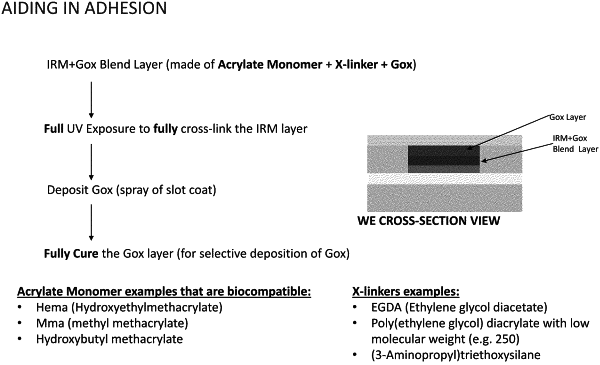| CPC A61B 5/14865 (2013.01) [A61B 5/14532 (2013.01); A61B 5/7246 (2013.01); A61B 2562/125 (2013.01)] | 10 Claims |

|
1. A method of making an amperometric analyte sensor for implantation within a mammal comprising the steps of:
providing a first base layer;
forming a conductive layer on the first base layer, wherein the conductive layer includes a first working electrode;
forming an analyte sensing layer on the conductive layer, wherein the analyte sensing layer includes an enzyme selected to generate a detectable electrical signal upon exposure to an analyte, wherein:
the analyte sensing layer is formed by combining a polymerizable monomer, a crosslinking agent and a photoinitiator agent;
forming an interference rejection layer on the analyte sensing layer, wherein:
the interference rejection layer is formed by a reaction mixture comprising a polymerizable monomer, a crosslinking agent and a photoinitiator agent;
the reaction mixture comprises a 15% to 96% of crosslinker to monomer ratio; and
the analyte sensing layer and the interference rejection layer are formed when the reaction mixture is polymerized by exposure to light; and
forming an analyte modulating layer on the interference rejection layer; such that an amperometric analyte sensor for implantation within a mammal is made.
|